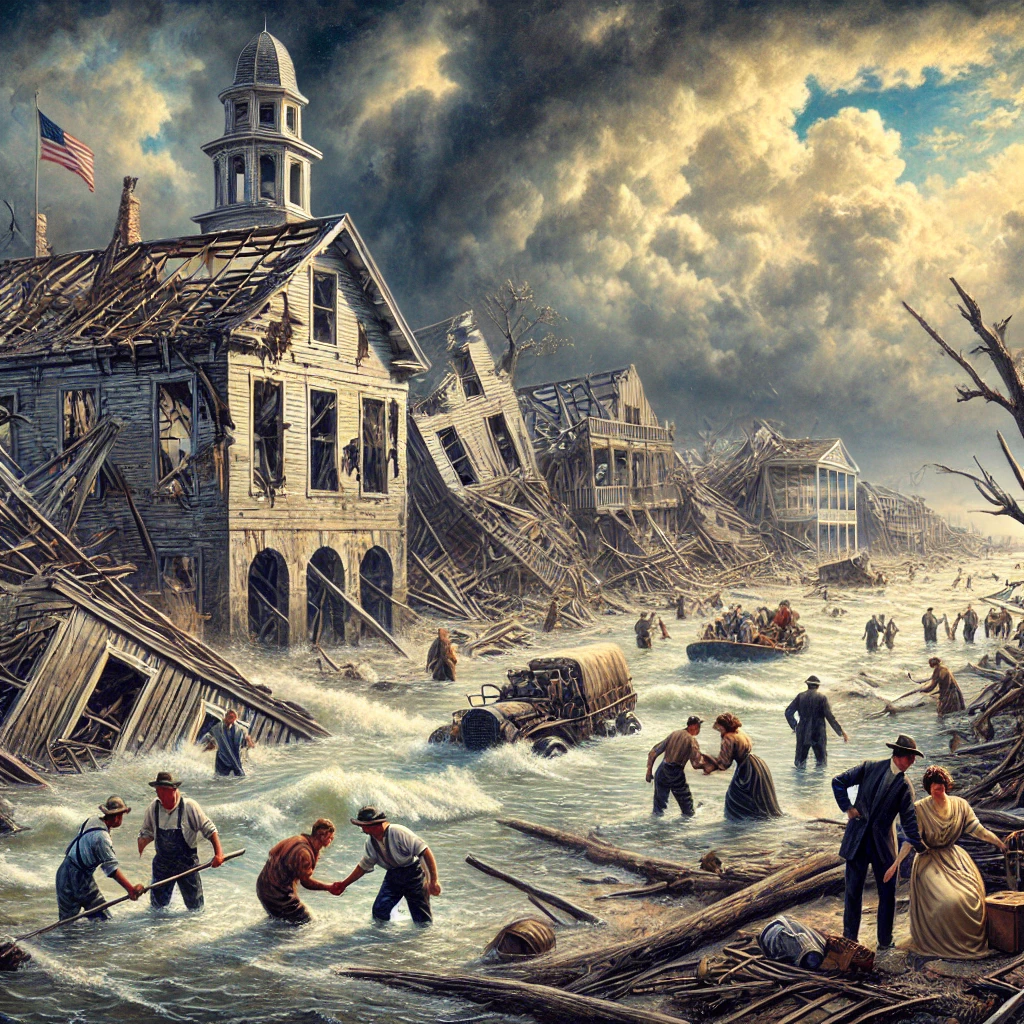On September 8, 1900, a catastrophic hurricane struck Galveston, Texas, marking the deadliest natural disaster in American history. Known as the Great Galveston Hurricane, this Category 4 storm claimed the lives of an estimated 8,000 to 12,000 people and left the city in ruins. This disaster not only highlighted the need for better storm prediction but also led to significant changes in disaster response and preparedness that continue to shape emergency management today.
The Arrival of the Storm
The Galveston Hurricane formed over the Atlantic in late August 1900 and intensified as it approached the Gulf Coast. With wind speeds estimated at 140 mph, the hurricane made landfall on Galveston Island, bringing towering waves, storm surges, and relentless rain. At the time, weather prediction technology was limited, and residents were largely unaware of the storm’s severity until it struck.
The Devastation in Galveston
Galveston, a thriving port city with a population of around 37,000, was almost entirely destroyed. Buildings were leveled, and many homes were swept away by the massive storm surge. The storm caused extensive flooding, drowning many residents and leaving survivors stranded without shelter or basic necessities. In the days that followed, bodies were found scattered throughout the city, and the scale of the loss was unprecedented.
The Impact on Disaster Response
The Galveston Hurricane exposed critical weaknesses in America’s disaster response systems. The lack of early warning and the underestimation of the storm’s power underscored the need for improved weather forecasting. This disaster accelerated efforts to develop more effective storm prediction methods, leading to the establishment of a more comprehensive national weather monitoring network.
Engineering and Infrastructure Changes
To prevent a similar disaster, Galveston underwent significant infrastructure changes. The city constructed a 17-foot seawall, which provided a barrier against future storm surges. Additionally, Galveston elevated its buildings and streets, raising the entire city to protect against flooding. These engineering feats became a model for other coastal cities facing similar risks.
Legacy of the 1900 Galveston Hurricane
The Galveston Hurricane fundamentally transformed how the United States approaches disaster preparedness and response. It spurred innovations in storm tracking, led to the establishment of stronger building codes, and laid the foundation for modern emergency management practices. The tragedy of 1900 remains a solemn reminder of the importance of disaster preparedness and the resilience of the human spirit.
Conclusion
The Great Galveston Hurricane of 1900 is remembered not only for its devastating impact but also for its enduring legacy in disaster response. The lessons learned from this tragedy have paved the way for advancements in storm prediction and emergency management, helping to protect communities and save lives today.

